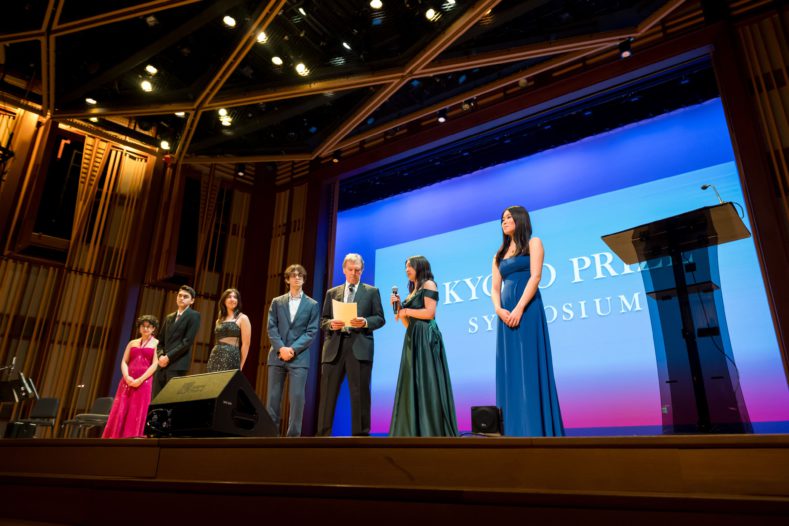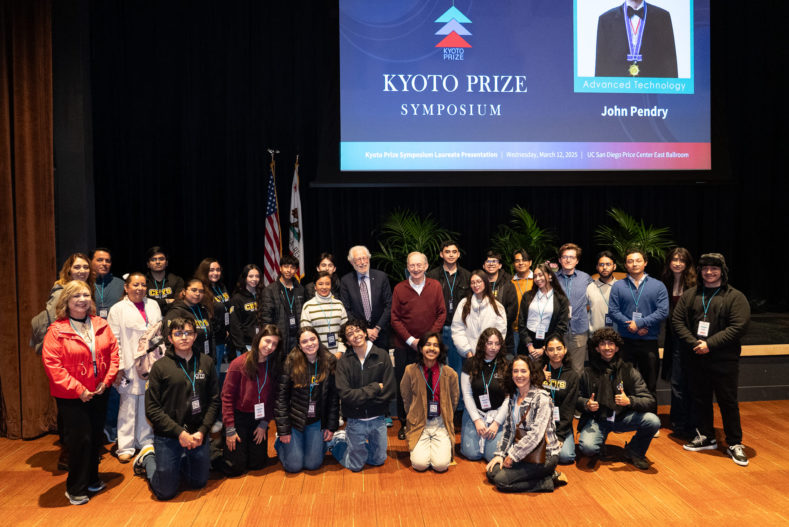
The Kyoto Prize Symposium, featuring the three 2024 Kyoto Prize laureates, was held in San Diego, California, during March 11-13, 2025. This event has been organized since 2002 by the Kyoto Symposium Organization, a local non-profit organization, and two universities, the University of California San Diego (UCSD) and Point Loma Nazarene University (PLNU).
On March 11, the first day of the program, laureates, organizers, and supporters cultivated good rapports at a welcome reception hosted by local organizers at PLNU.
On the 12th and 13th, three Kyoto Prize laureates gave lectures. On the 12th, Sir John Pendry, in Advanced Technology, and Dr. Paul F. Hoffman, in Basic Sciences, and on the 13th, Mr. William Forsythe, in Arts and Philosophy, gave lectures at the University of California, San Diego. Despite the rainy weather, the auditorium was packed with students from the university and area high schools as well as local citizens.
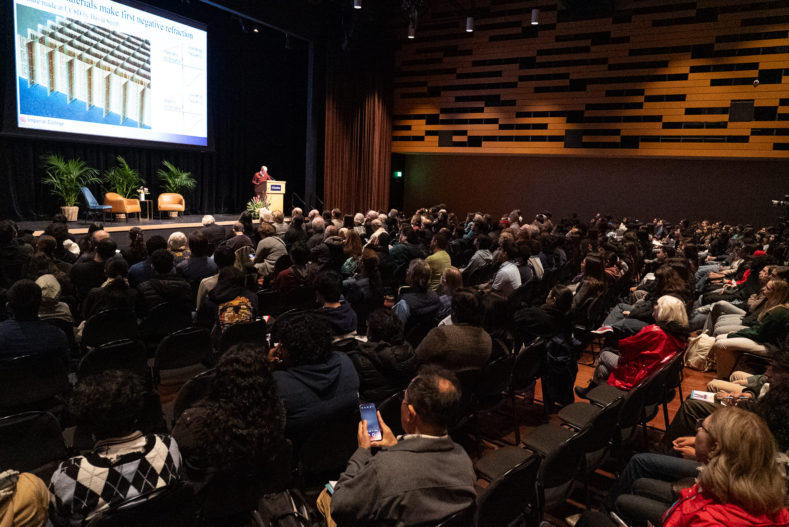
Sir John Pendry discussed his path to inventing metamaterials, the theory behind invisibility cloaks and superlenses, and the future technological prospects that metamaterials will enable.
During the Q&A session that followed, the audience actively asked questions, and he sincerely answered not only questions related to science, such as the application of metamaterials, but also those asking for advice on how to live a life as a scientist. In response to a high school student’s question, “What should I do to become a successful scientist like you?”, he advised the student, “You need to master the skills of science, learn social skills to communicate with others, and find a good mentor who can give you advice on the path you should take.”
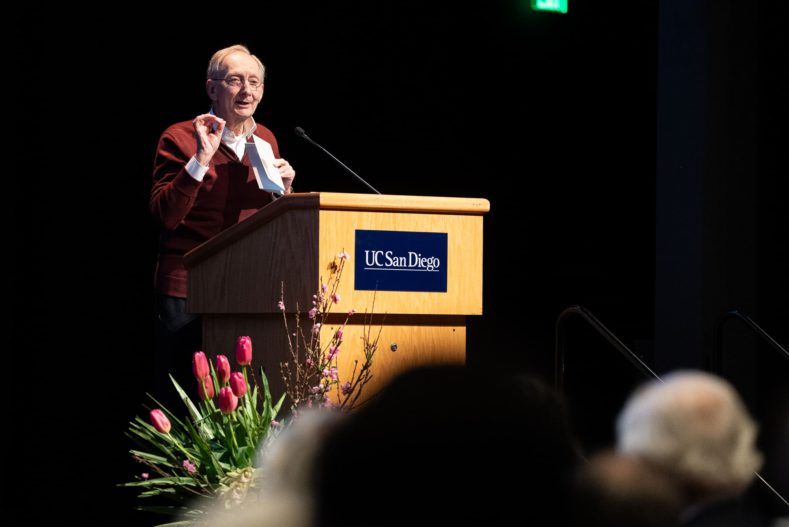
Dr. Hoffman began by sharing his experiences in geological exploration, and then spoke passionately about the science of plate tectonics and snowball Earth, as well as his grand hypothesis about the relationship between the origin of life today and past snowball Earth events.
During the Q&A session, he carefully answered questions such as current climate change and how he conducted his research. When asked why he chose Namibia as the base for his research, he replied, “Because both the natural and political environments were suitable for geological research. However, it is unfortunate that I could not share my research with local students in Namibia.”
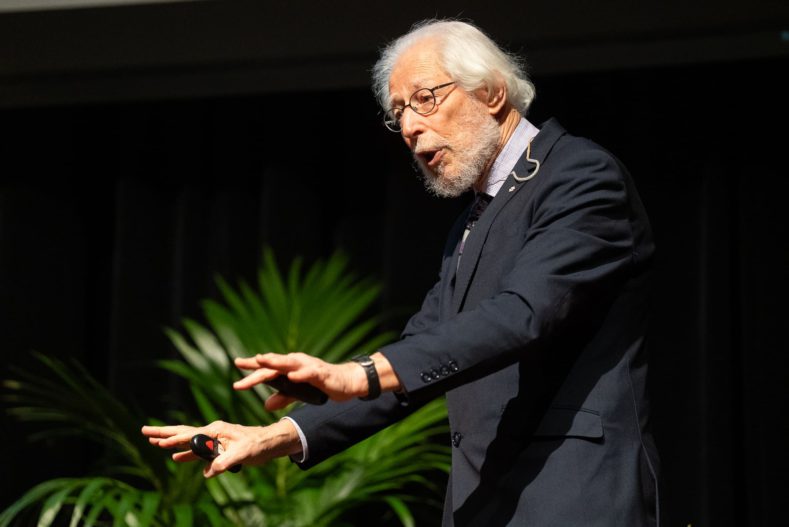
Next, Mr. Forsythe, sometimes using dance gestures and humor, talked about his encounters with various people and experiences that have shaped his work, as well as his philosophy of dance and choreography.
During the Q&A session, he was gracious enough to answer questions about choreography, ballet style, and the importance of these aspects of ballet. When asked what an artist can do in times of turmoil, he replied, “In order to respond to it, it is important to maintain mental agility and a state of mind that does not adhere to any particular state.”
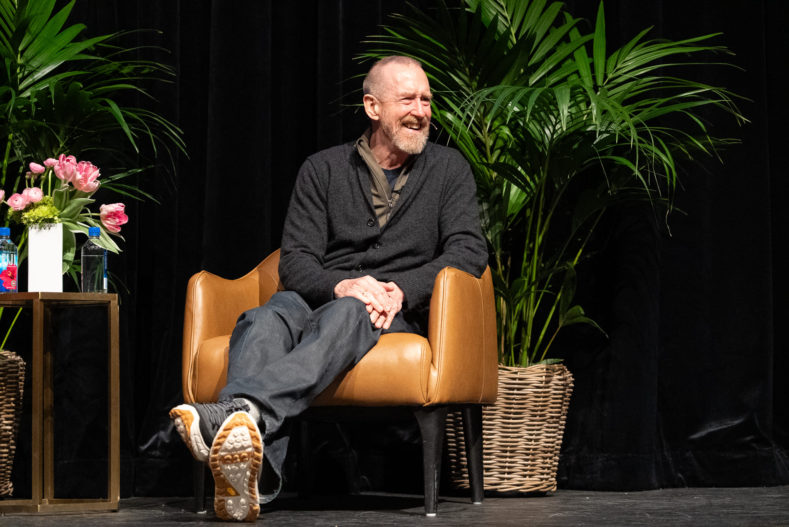
The lecture was followed by a teaching workshop for dance students at UCSD’s dance studio. The students were thrilled to learn how to move their bodies for richer expression. On the same day, Sir John Pendry concluded a workshop and seminar for students in his area of specialization; and Dr. Hoffman held a variety of technical programs over two days that included a field excursion of Torrey Pines State Beach.
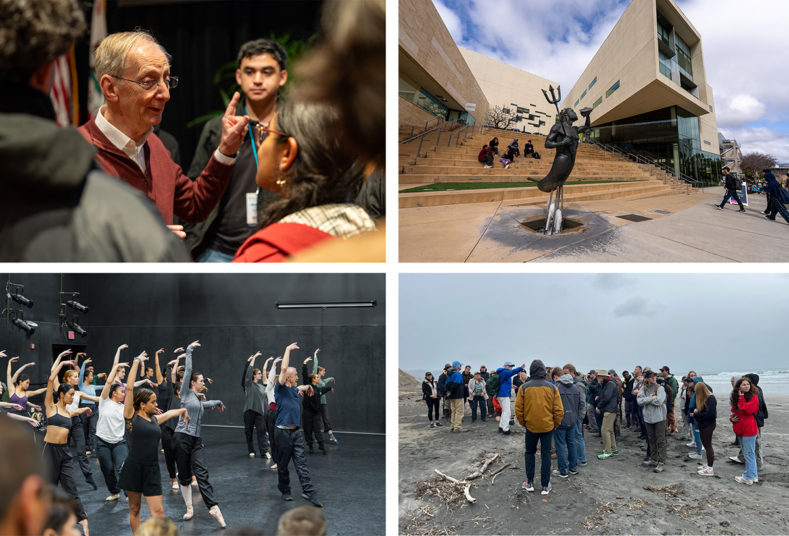 Upper left: Sir John Pendry answering students’ questions after his lecture Upper right: The symposium venue, University of California, San Diego Lower left: Mr. Forsythe’s workshop Lower right: Field trip in Dr. Hoffman’s seminar
Upper left: Sir John Pendry answering students’ questions after his lecture Upper right: The symposium venue, University of California, San Diego Lower left: Mr. Forsythe’s workshop Lower right: Field trip in Dr. Hoffman’s seminar
The benefit gala was held on the evening of the 12th. The reception was followed by a stage programme featuring speeches by the Kyoto Prize laureates and Shinobu Inamori-Kanazawa, President of the Inamori Foundation, as well as dance and music performances.
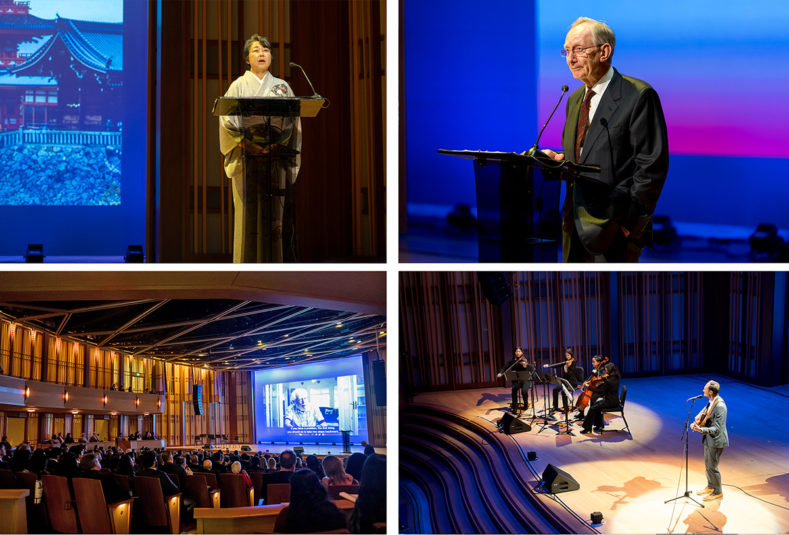 Upper left: Shinobu Inamori-Kanazawa, president of the Inamori Foundation, gives the welcome address Upper right: Sir John Pendry addresses the Gala audience
Upper left: Shinobu Inamori-Kanazawa, president of the Inamori Foundation, gives the welcome address Upper right: Sir John Pendry addresses the Gala audience
The highlight of the event was the introduction of the scholarship programme for high school students from San Diego and neighbouring Tijuana, Mexico. A video message from six former scholarship recipients who have gone on to make their mark on the world was shown, followed by on-stage interviews with this year’s six scholarship recipients. The audience applauded the words of the students, who were full of hope for the future as they demonstrated their various talents in science, art and other fields.
